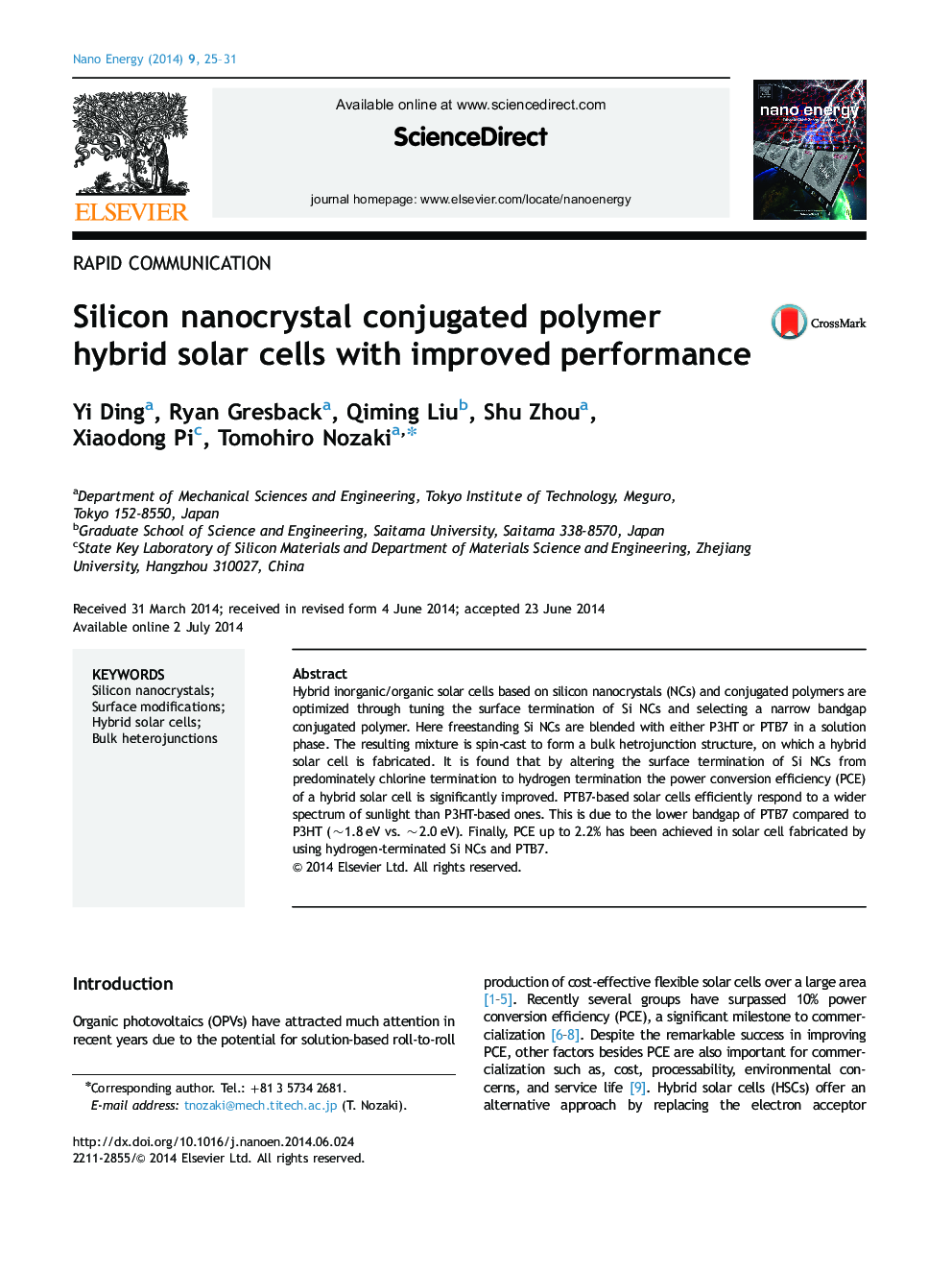| Article ID | Journal | Published Year | Pages | File Type |
|---|---|---|---|---|
| 1557755 | Nano Energy | 2014 | 7 Pages |
•Freestanding Si nanocrystals with narrow size distribution have been synthesized.•Si nanocrystal polymer hybrid solar cells reach PCEs up to 2.2%.•Silicon nanocrystals promote exciton dissociation at Si/polymer interfaces.•Si surface termination and band alignment are critical to solar cell performance.
Hybrid inorganic/organic solar cells based on silicon nanocrystals (NCs) and conjugated polymers are optimized through tuning the surface termination of Si NCs and selecting a narrow bandgap conjugated polymer. Here freestanding Si NCs are blended with either P3HT or PTB7 in a solution phase. The resulting mixture is spin-cast to form a bulk hetrojunction structure, on which a hybrid solar cell is fabricated. It is found that by altering the surface termination of Si NCs from predominately chlorine termination to hydrogen termination the power conversion efficiency (PCE) of a hybrid solar cell is significantly improved. PTB7-based solar cells efficiently respond to a wider spectrum of sunlight than P3HT-based ones. This is due to the lower bandgap of PTB7 compared to P3HT (~1.8 eV vs. ~2.0 eV). Finally, PCE up to 2.2% has been achieved in solar cell fabricated by using hydrogen-terminated Si NCs and PTB7.
Graphical abstractFigure optionsDownload full-size imageDownload as PowerPoint slide
